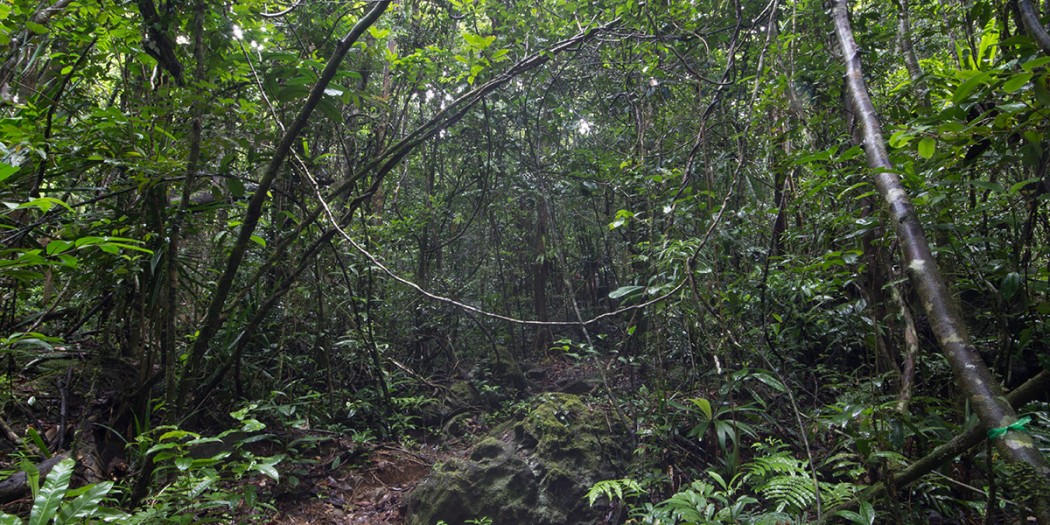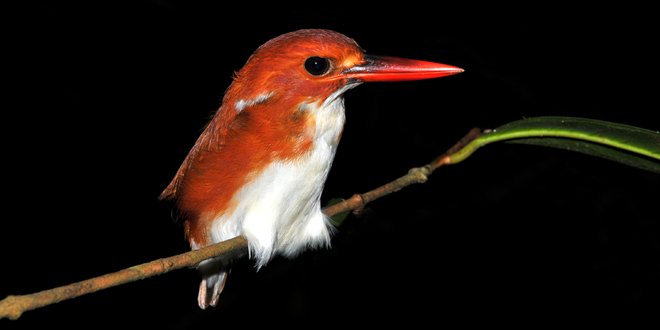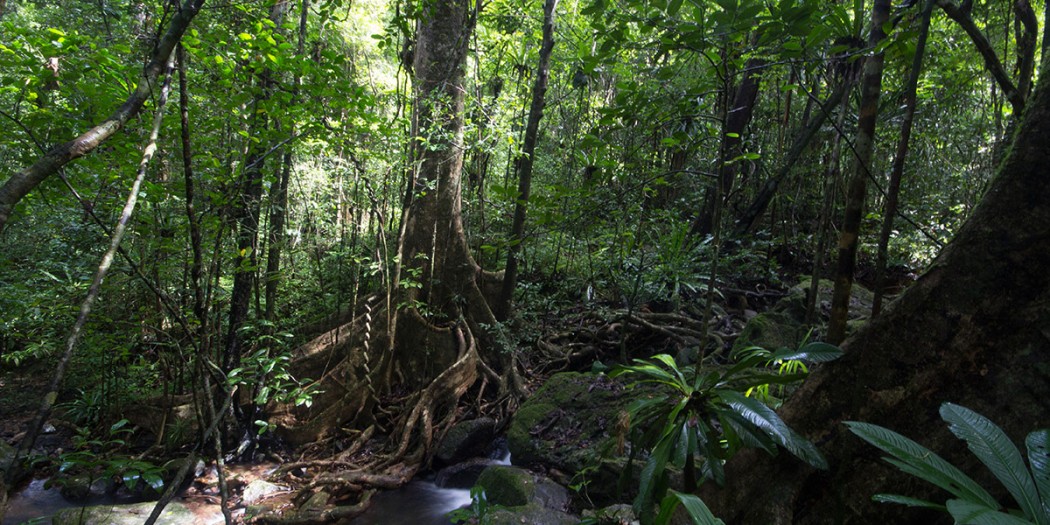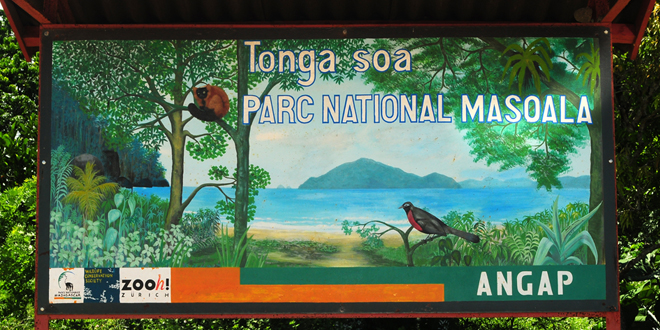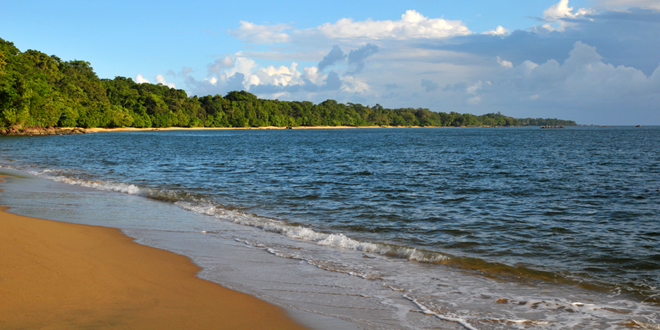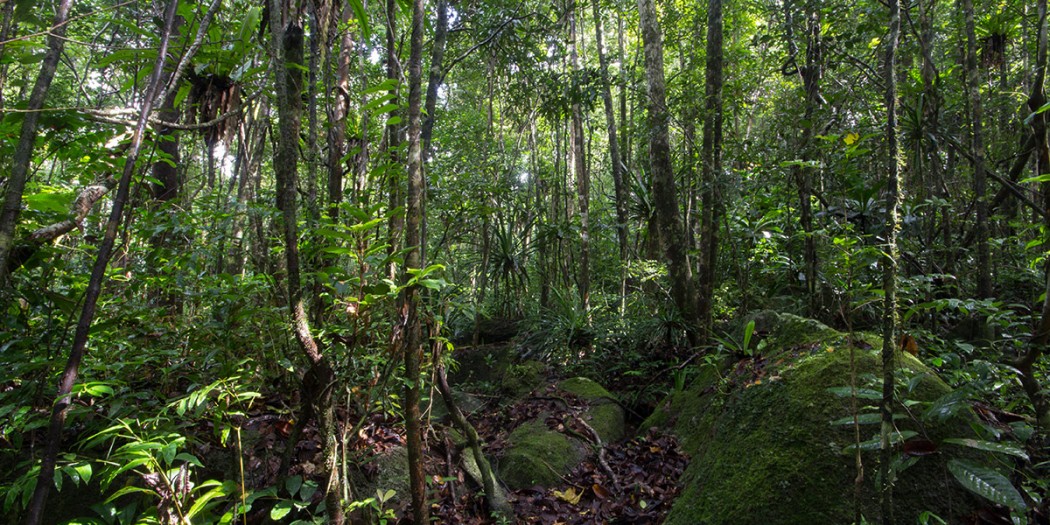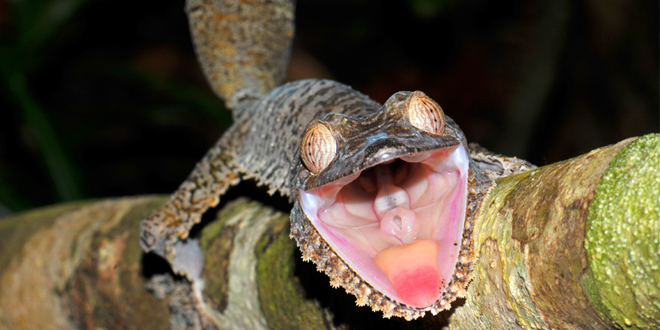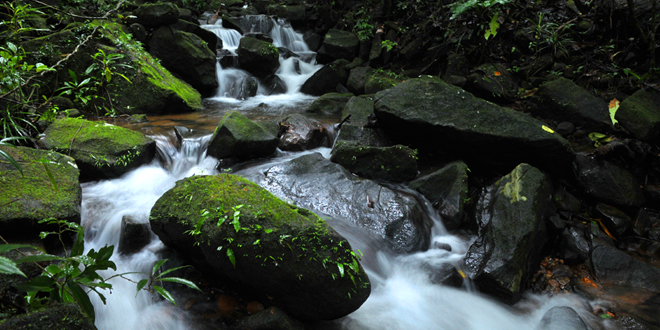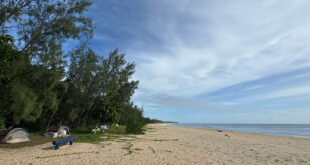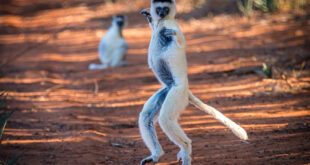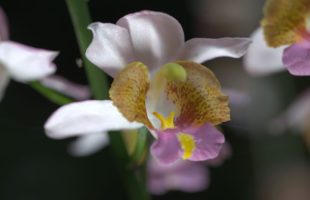Masoala:
Masoala means “eyes of the forest”. The national park owes this name to the Aye-Aye (Daubentonia madagascariensis), whose eyes ghostly glow like two large yellow spheres in the light cone of the torch at night. Unfortunately, night walks in national parks are currently forbidden, so that only the name testifies to this magnificent experience.
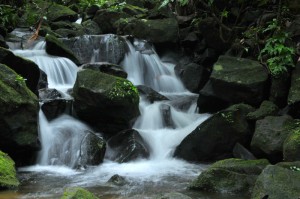
Location:
The Masola National Park is located on the peninsula of the same name in northeastern Madagascar. At the northern end of Antongil Bay, also known as the “cradle of whales”, lies the small coastal town of Maroansetra. From the capital, Antananarivo, the fastest way to get to Maroansetra (about 700 km) is by plane, another flight connection to Toamasina (Tamatave) is also available. The only road from Toamasina, RN5, is very, very difficult to drive on, sometimes completely impassable for weeks. In between are numerous, not always functional and adventurous ferries as well as destroyed bridges. We, therefore, do not recommend trying to reach Masoala by land. The National Park itself can be reached by boat from Maroansetra directly across the open sea (two to three hours’ drive). Masoala should only be visited accompanied by experienced tour guides.
Information about the national park:
Founded in 1997, Masoala National Park is the largest in Madagascar with over 2100 km² and at the same time the largest rainforest in the country. It includes the protected areas of the island of Nosy Mangabe, Cap Est, and the Tanjona marine reserve with three coral reefs (Tampolo, Ambodilaitry and Ifaho) off the island. Mangrove forests are as much a part of the landscape as beaches and dense, partly impenetrable rainforest. Masoala has been threatened for years by deforestation and slash-and-burn. Valuable ebony and rosewood is beaten illegally. In addition, locals keep setting fires to preserve more farmland and are constantly moving their village boundaries further into the park areas.
The reserve is partly funded by the Zurich Zoo, which built a large Masoala Rainforest Hall in the Swiss capital in 2003. Due to the hall, the national park has become famous among many travellers but is still one of the least visited areas of Madagascar. Since 2007 the Masoala National Park has been a UNESCO World Heritage Site. Various trails lead through the park, all of them are rather easy to walk on.
Climate:
Due to its proximity to the equator, the entire region enjoys a tropically hot and wet climate. With over 7000 mm of rainfall per month, Masoala is one of the wettest areas of Madagascar. Due to the constant high humidity at temperatures around 30°C and more, the national park owes its enormous biodiversity and lush flora, but both make traveling here rather strenuous.
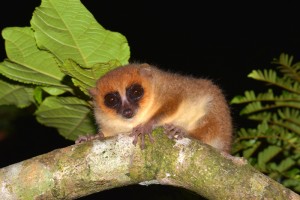
Infrastructure:
This remote region of Madagascar is only visited by a few tourists but has a reasonably good infrastructure. In Maroantsetra, Ambodiforaha and Tampolo there are several hotels and lodges of different price and quality. There are only a few places to stay in the National Park itself. The two existing campgrounds (with rustic sanitary facilities and without electricity) have to be climbed from Ambanizana on an arduous, sometimes steep, and slippery walk lasting several hours. Alternatively, there are several luxury hotels directly at the national park, which, however, demand enormously high prices for overnight stays. Boat trips are offered from Maroansetra to the research station in Andranobe. The Park Office is located in the center of Maroantsetra, where you pay for admission and book local guides. Due to the boat trip lasting several hours and the often rough swell, park visits often have to be canceled for a short time and there is little time left for wildlife observations. In bad weather, it is advisable to go to the island of Nosy Mangabe, which belongs to the national park and offers just as much to see and marvel at, but is much easier to reach.
Flora and Fauna:
In Masoala countless undescribed animals and plants are still waiting to be discovered. More than half of all known endemic species of Madagascar live in this region and make it one of the last real paradises on earth. There is nothing like it in the whole world.
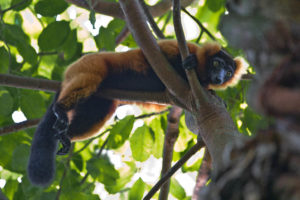
The sea offers 20 species of freshwater fish, around 100 different corals, from July to September passing humpback whales, dolphins, and even sea cows (dugongs) and turtles – the first-class water for snorkelers and divers. In the countryside, the magnificent rainforest with its more than 60 reptile and amphibian species, the 10 lemur species, about 15 other mammal species, and about 90 bird species captivates nature lovers. Red ruffed lemurs jump through the treetops, small leaf chameleons – among them the colorful Brookesia vadoni – fight their way through the leaves at the feet of ancient giant trees, fantastically camouflaged leaf-tailed geckos (Uroplatus fimbriatus) press themselves against branches and tree trunks. The rare brown-tailed mongoose creeps through the bushes and panther chameleons climb through the branches. More than 130 different butterflies and a total of 500 insect species make the forest a magnificent play of colors with unique soundscapes. The absolute highlight of the national park is the Aye-Aye, of which only a few individuals still exist – unfortunately, it can no longer be seen in Masoala National Park due to a ban on night walks.
Wherever you go, stand, swim, or dive: Everywhere in Masoala National Park you are surrounded by a breathtaking number and beauty of rare animals and plants, which make every effort and the arduous journey quickly forgotten. If you are looking for the last paradise, you will surely find it in Masoala.
 MADAMAGAZINE Your Magazine about Madagascar
MADAMAGAZINE Your Magazine about Madagascar
